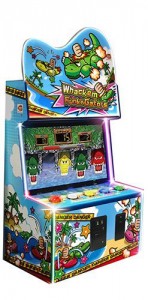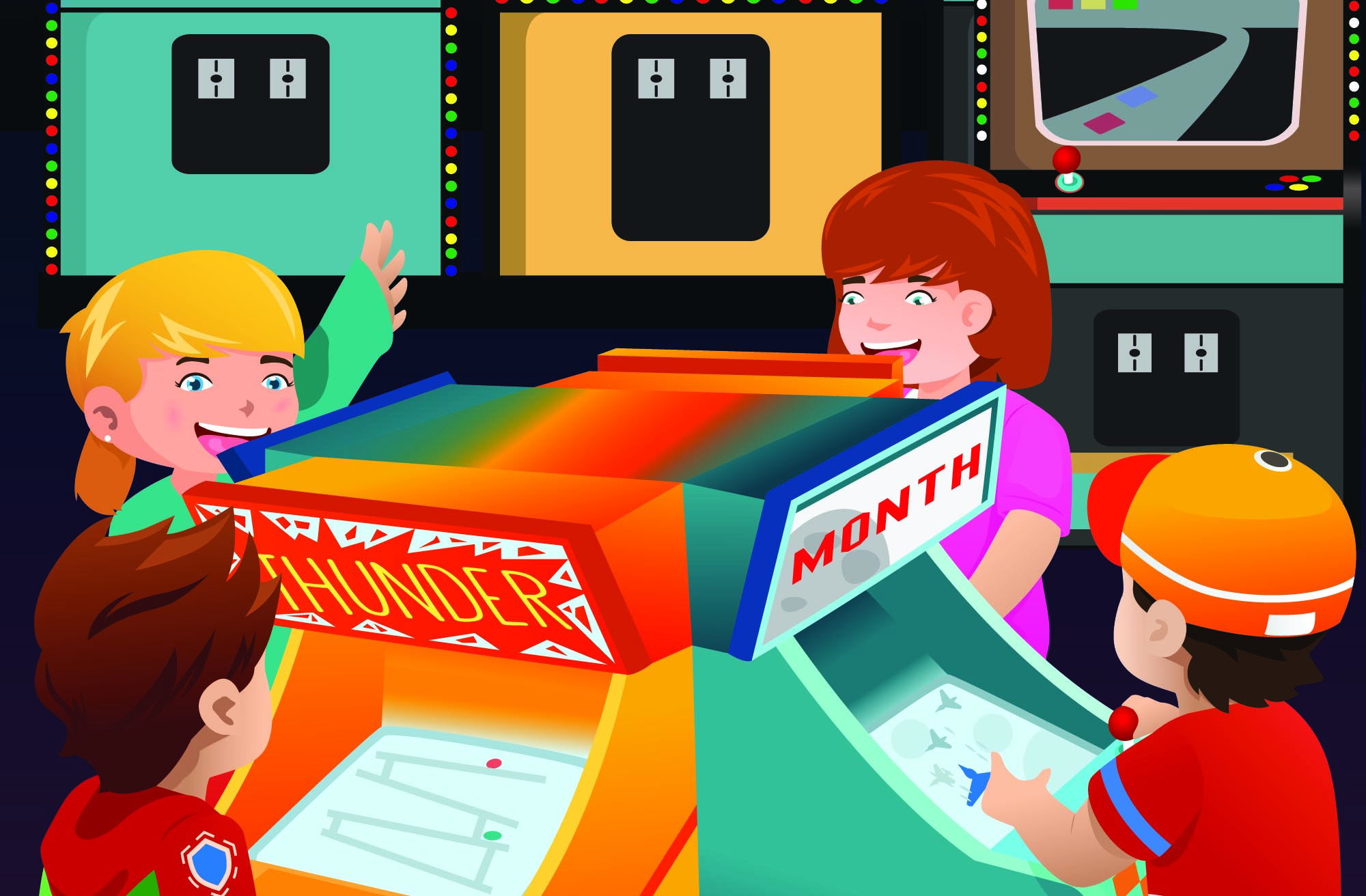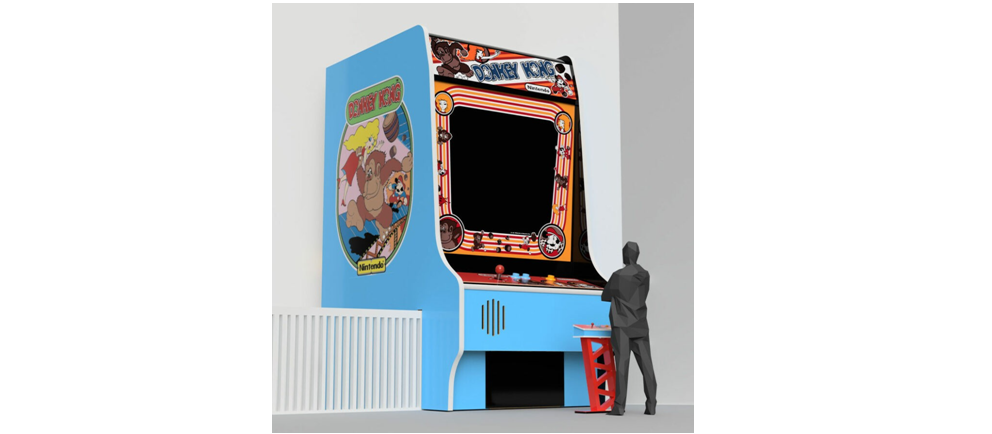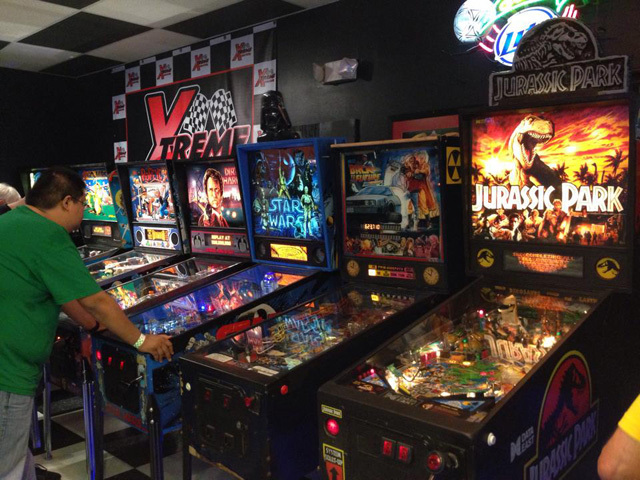Continuing with our series of articles about getting your arcade off the ground, today we’re going to talk a bit about what type of location you should be looking to procure, as well as explain the common types of arcade establishments.
Defining the types of arcades isn’t as straightforward as, say, explaining the many types of games available on the market. Nevertheless, knowing the different variations of arcades establishments, as well as the games featured in them, can help to give you an edge in the business. After all, the machines you’ll be offering in your family center will be the main driving force that will compel your target demographic to visit.
And speaking of target demographic, this is also another factor you will want to always keep in mind in order to provide the absolute best type of games to your customers. Knowing what type of clients will be visiting your establishment will give you a general idea of the machines you will have to offer in order to stay relevant.
If you’re like us, and the burning passion for arcade games flows through your veins like hot coals, then you will want to share said passion with your customers and, at the very least, provide them with a very good time. But before you go and do just that, there’s a couple of things we need to talk about first.
Choosing an Appropriate Location For Your Arcade Business
Every successful business enterprise starts by studying the market, and arcade establishments are not an exception to this rule. In order to start your business on the right track, we will first need to study the feasibility of the area in which you wish to operate. Unfortunately, studies on the demographics of arcade-goers and businesses in general on the internet are very limited, which makes it harder for the budding entrepreneur to conduct his own research.
But don’t fret, that’s where we come in. At PrimeTime Amusements, we not only sell the very best and most modern arcade games on the market, we also provide Family Entertainment Center (FEC) consulting services, which include studying the market to determine the best possible place to set up your business. But our services don’t end there, we also assist with everything else that comes after said initial study, such as zoning approval, building size, custom floor planning, and selecting the right type of machines, among others.
As a general rule of thumb, your arcade establishment should be located in a place where the target demographic can easily reach it without too much hassle. This translates to high-density areas where kids and young adults usually hang out, such as near shopping malls, schools, retail and commercial zones and, to some extent, residential neighborhoods.
Setting the Right Theme For The Target Audience
Like we mentioned before, the target demographic is everything when it comes to arcade businesses. They are the ones that will help you pay the bills and keep your business relevant. In order to create a successful arcade establishment, we must shirk most of our personal idiosyncrasies, and build for profit, rather than personal enjoyment. As opposed to creating a personal game room, an arcade must be built to appeal to the widest common denominator.
We understand that this may create feelings of discomfort, especially if your target demographic are youngsters (or older groups, depending on your preferences) that won’t thoroughly enjoy the games you pictured your “dream arcade” would have. But hey, that’s what personal gaming rooms or, as we like to call them, Mancaves are for. Arcade businesses need to have amusements that would keep the people glued to the game, and provide the most amount of returns for your investment.
Case in point, most businesses in this industry revolve around three main types of machines: Arcade Games, Ticket Redemption Games, and Instant Prize Games. Granted, the types of arcades games available on the market actually span a wider variety of categories, but they essentially can be grouped into these three: the ones that give tickets, the ones that don’t, and the ones that give instant gratification to the lucky players. Ideally, an arcade should include a balanced mix of these three types of amusements. But in order to appeal to the wider demographic, you may need to lean more towards one specific type of machine.
So, what type of machine should you include in your arcade establishment? Let’s take a closer look:
-
Arcade Games
These type of games are arguably the ones that receive the most amount of attention, especially by teenagers and young adults. These amusements usually feature challenging content geared towards gratuitous violence and destruction which, to no one’s surprise, tend to attract people from this age group, especially young males.
This category encompasses all sorts of video games, from mechanical marvels like Pinball, to completely digital titles like Street Fighter, Dance Dance Revolution, and so on. In general, the gist of these games revolves around setting high scores, as well as beating already-existing scores of previous players, or giving the customers the opportunity to play against each other to find out who’s the best. The competitive environment is enough to get any teenager riled up and sticking more coins into your machines in order to prove their worth. If your target demographic consists mostly of teens and young adults, then you might want to lean a bit towards providing more of these amusements.
However, it’s also important to keep the balance between the three. This is because an excessive amount of arcade games can put off parents from sending their children to your business, as they can perceive the competitiveness and violent content of your amusements to be a negative example for them.

-
Redemption Games
The concept of these amusements are fairly simple and straightforward; perform well in the game, and receive tickets as a reward. An arcade owner would do well to include a sizeable amount of these machines to their repertoire, as they can provide good entertainment for both children and their parents accompanying them. These games are often simple to understand and play, but difficult to master, or rely mostly on luck in order to win at them. Common examples of Redemption Games are Skee-Ball, Basketball Bank Shot, those roulette games that offer tickets as their prizes, and other reflex-based games like Whac-A-Mole, among others.
Redemption Games are more geared towards older adults, as well as younger children. The reason they’re such a great addition to any arcade is because they provide a common ground where children can play and bond with their parents and, in exchange, receive tickets for their performance. And, after all is said and done, they can make the victory walk towards the redemption counter together, and exchange their hard-earned tickets for great prizes. At the end of the day, your arcade allowed a family to have good ol’ time which they won’t forget anytime soon. Odds are they’ll be back, which means more profit for you.
The success of redemption games is achieved with a mix of appropriate machine placement, and a well-stocked and enticing prize counter. After all, there’s not much point in grinding for all those tickets if there’s not going to be anything worthwhile to exchange them for.

-
Instant Prize Games
This category is reserved for those games that neither dispense tickets, nor do they feature complex gameplay mechanics like the Arcade Games mentioned above. Amusements such as the Crane Game and the Axe Master fall into this category, as they offer a method in which the user can redeem their investment with instant prizes if they’re skilled enough. A good assortment of Instant Prize Games (that feature actual good prizes) can help to forgo the need of a ticket redemption counter, because they serve as big enough enticement for the user to sink plenty of coins into in hopes of landing a reward. Considering that a good part of the profits of any given arcade come from the ticket redemption prizes and rewards; if you don’t plan on adding a redemption counter to your business, then you should at least consider adding a handful of these to your family center.

The Ticket Redemption Counter
We really can’t understate the importance of the prize counter in your arcade. For many kids and adults alike, the ticket redemption counter is the sole reason for spending loads of coins and time playing on specific machines just to gather enough tickets to finally purchase that one item from the counter.
However, setting up a redemption counter is not as simple as buying a bunch of random prizes and shoveling them onto shelves for the kids to pick them up. Building an enticing selection of prizes requires a keen eye and, as we’ve been mentioning for some time now, getting to know your demographic. For many family centers, the redemption counter is responsible for a big chunk of the profits, so it’s only logical to dedicate more than a few minutes of your time to think about what prizes to feature on it, as well as to train the staff on how to properly work the counter.
A good prize counter must have a balance between low, medium, and high-end rewards, so as to appeal to most types of customers. The low-end should be populated by inexpensive utensils and knick-knacks, such as pencil erasers, small plush toys, or even candy, both in individual presentations, as well as in packs of the stuff. The medium-end can be filled with bigger plush toys, laser pointers, or other toys from the $10-$20 price range that may require several trips to your arcade in order to gather the necessary tickets to purchase. For some businesses, the high-end selection is not necessary, as children will seldom gather the amount of tickets required to purchase prizes from this category. Instead, this range of rewards are for the older teens and adults that frequent the arcade, so that they too can have a proper ticket-sink in which to invest their hard-earned paper. Prizes from this category can be anything from video game console controllers, headphones or other PC peripherals, or even expensive electronics like TVs or computer monitors. I think it goes without saying that these items will be the ones to command the highest prices in the whole counter.
It’s important to invest in all 3 areas of the redemption counter, as they will pander to different types of customers. The low-end is for the little tykes who prefer to bring home a bag of odds and ends, instead of one bigger prize. The medium-range is for those that like to save up their tickets in order to bag that one big prize. And the high-end, like we mentioned above, is for teens and adults who have outgrown kid’s toys, and want a selection of prizes fit for their age and preferences.
Now that you know the importance of choosing an appropriate location for your arcade, as well the importance of balance in the types of amusements you provide, you are one step closer to making your dream of building an awesome arcade come true. Stick around for part 3!
Here at PrimeTime Amusements we provide all sorts of arcade gaming sales and rental solutions, as well as consulting services for entrepreneurs who want to open their very own arcade business. If you require our services, or simply want to know more about what we do, feel free to give us a call at 1.800.550.0090, or pay us a visit at 5300 Powerline Rd, Suite 210, Ft. Lauderdale, Florida.
We’ll be waiting!






[…] Continue Reading At PrimeTime Amusements […]
[…] previous occasions, we talked about the different types of arcades games available, what works for most arcade […]